MRT Kit
BLACKSMITH KIT DOCUMENTATION
Documentation (word doc)
Documentation (pdf )
BLACKSMITH KIT DOCUMENTATION
Documentation (word doc)
Documentation (pdf )
THE ANIMAL KINGDOM: UNIT 2 : LESSON 1
GRADE 1
COMMON ANIMALS IN THE ENVIRONMENT
 Hello students!! In our lesson today we will be learning something new and exciting. Every animal we can think of is apart of the animal kingdom. We will be learning how to identify these animals. Some of these are man, dogs, cats and even horses. Let’s begin.
Hello students!! In our lesson today we will be learning something new and exciting. Every animal we can think of is apart of the animal kingdom. We will be learning how to identify these animals. Some of these are man, dogs, cats and even horses. Let’s begin.
Story telling :
The teacher to read the story below:
THE LION AND THE BOAR
It was a hot summer day. A lion and a boar reached a small water body for a drink. They began arguing and fighting about 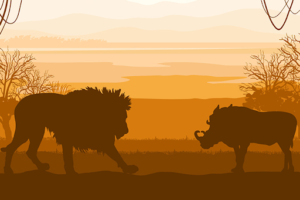 who should drink first. After a while, they became tired and stopped for a breath, when they noticed vultures above. Soon they realized that the vultures are waiting for one or both of them to fall, to feast on them. The lion and the boar then decided that it was best to make up and be friends than fight and become food for vultures. They drank the water together and went their ways after.
who should drink first. After a while, they became tired and stopped for a breath, when they noticed vultures above. Soon they realized that the vultures are waiting for one or both of them to fall, to feast on them. The lion and the boar then decided that it was best to make up and be friends than fight and become food for vultures. They drank the water together and went their ways after.
Identify the three animals mentioned in the story and write it in your note books.
——————————
__________________
__________________
Exercise Two (2)
OBSERVING AND LISTENING

Objective of Exercise : To enhance visual skills and cognitive
development of the child .
Your teacher will show you a video about human changes, you will pay keen attention and listen to the video in order to do the exercise.
https://www.youtube.com/watch?v=PHYi4fqeEdw
The teacher can play this song and you can dance and have fun.
EXERCISE THREE (3)
COMPLETE THE TABLE BELOW :
Fill in the blanks.
| ANIMAL | NUMBER OF LEGS | COVERING OF ANIMALS |
| Example: Deer |
4 |
Hair/ Fur |
| Dog | ||
| snake | ||
| Ant | ||
| Lady bug | ||
| Mice | ||
| fish |
ENDING OF CLASS.
SCRATCH CHALLENGE
Today’s challenge will be: create an animation using scratch showing what you understood from the lesson . Have fun exploring the different sprites to finish your work and do have fun!
Use the link below for necessary help:
https://www.youtube.com/watch?v=1E8opsBP_98&t=11s
Growth and Development: Grade 2: Lesson 2
The Human Body
Hey Students! Today we will be learning something really fun: Growth and Change! The Human Body is constantly changing, due to various circumstances and reasons. In today’s lesson, we will explore why these changes happen, and how we can recognize these said changes.
———————————————————–
Story:
We will start off with a simple reading.
“All Grown Up!”
One sunny morning, whilst Sara was cleaning her room, she stumbled upon a worn, pink-coloured photo album. It was cutely labeled, “Sara: 2005-2015”. Curious, she opened the album, and smiled at what she found. The first few pictures were of her as a bubbly, bouncing baby. She was a chubby baby, with a small amount of hair on her head and had no teeth. She looked on, and was surprised to see the amount of changes that she had been through, from 2005 to 2015. 
She had grown from a small, chubby baby, to a crawling, babbling toddler, to a tall, skinny child, with curly hair. Sara put down the album, and looked at herself in the mirror. In front of her stood a tall teenager, with curly black hair and pearly white teeth. She smiled at herself, and did a pose in the mirror. “I sure have grown a lot!”, she giggled.
After admiring herself a bit more, she went back to cleaning her room.
Listening Exercise:
Objective of Listening Exercise: You will listen to a short reading about Human Development, afterwards, you will be given an exercise.

Listening Exercise, Read by the Teacher.
Have you ever looked at photographs of yourself as a baby, and wondered, “Why do I look different?” or, “I think I’m much smarter than when I was younger.” This is due to something called, Human Growth.
Human Growth is the development of Humans from babies, to children, to adults. When we grow, our bodies undergo many changes. Our hair begins to grow, our teeth begin to form, we begin to learn to walk and talk. Our bodies develop, and so do our behaviours.
You will find that, you do not eat the same things that you ate, when you were a growing baby. You do not behave the same way you did, when you were a baby. Instead of crying when you want something- you ask for it, and so on.
When you grow older, your bodies and behaviours will go through numerous changes. If we could look into the future, we would all look quite different than we do now!
2.1 Exercise
You will have three categories, in which you will list certain things: Baby, Child and Adult. You will have to list certain behaviours and physical appearances that you observe from each stage. When you have finished, you should be able to identify a change in Human Appearance and Behaviours as Humans Grow.
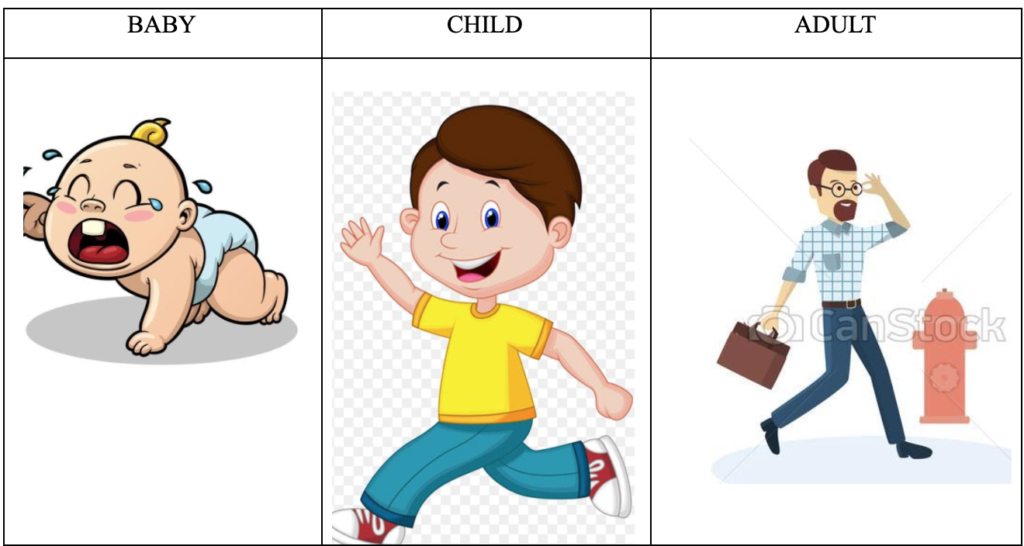
For Example:EXERCISE: List Behaviours and Appearances that you think each category would have.
Baby: Small, Cannot Talk, Has No Teeth, Cries when he/she wants something.
Child: Has teeth, Has grown in size, Playful.
Adult: Serious, Has grown taller, has a fully developed body.
—————————————-
Looking at A Video
Objectives: We will look at a Brain Pop Video together and afterwards, there will be a True or False Exercise.
Video: https://www.brainpop.com/health/geneticsgrowthanddevelopment/aging/
True or False Exercise:
Answers: 1F, 2T, 3F, 4T, 5T
Ending of Class
SCRATCH CHALLENGE:
Create an animation that explains Growth and Development Briefly. You have freedom in what sprites to use, and how creatively you convey your animation. E.G: Two characters having a conversation, about the topic. Remember to have fun!
Here are some useful resource links:
https://www.dummies.com/programming/how-to-add-sound-for-a-scratch-character/
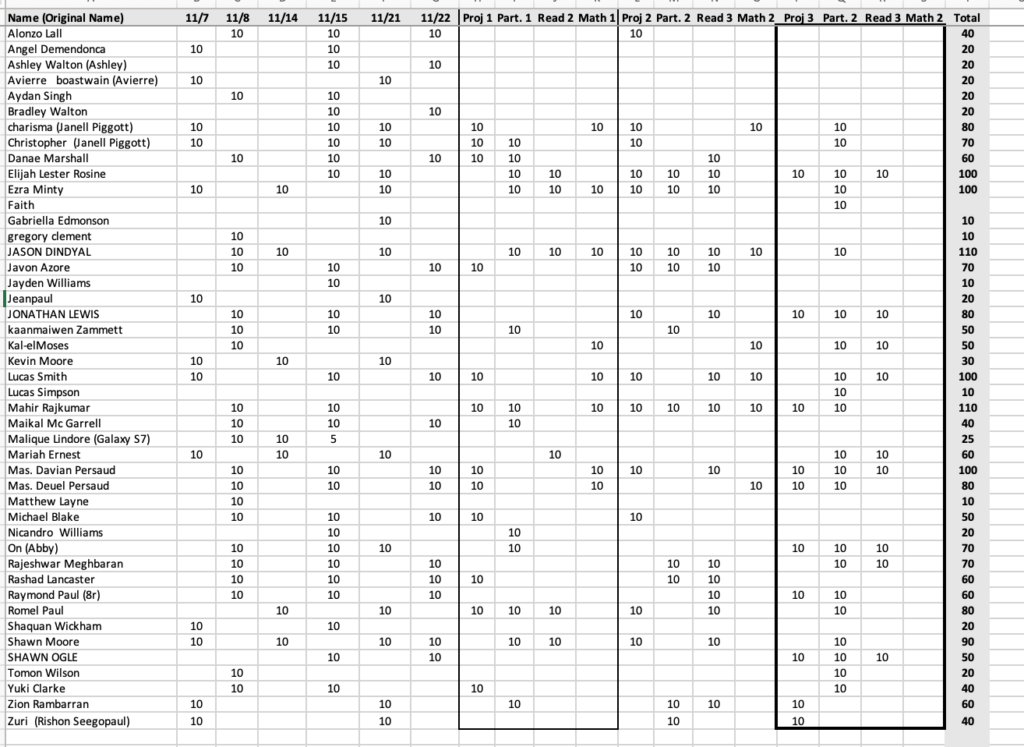
Use these points to shop here (click link)
Problem Solving
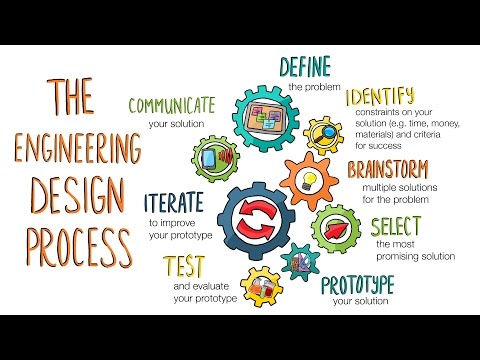
—————————————————–
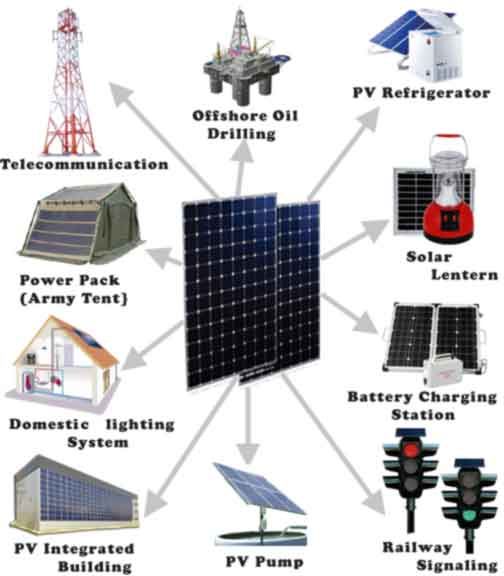
(Image 1.1)
Unit 2 Lesson 2- Solar Energy Application
ELA: Attentive Listening, Critical Listening (2) Maths: Sorting, Venn Diagrams (3) Science: Solar Energy
Electrical Current- a stream of charged particles, usually electrons, moving through an electrical conductor or space
Agrivoltaics- co-developing the same area of land for both solar photovoltaic power as well as for agriculture.
PV Tracker- A device that can track the position of the sun
Silicon- A chemical element classified as a semi-conductor that is used in most solar panels
Infrared Light- Light that comes from the sun which we can not see
Textiles- a type of cloth or woven fabric.
Molecule- a group of atoms bonded together, representing the smallest fundamental unit of a chemical compound that can take part in a chemical reaction
Catalyst- any material that increases the rate of a reaction without being consumed
Complete these sentences based on the video:
Okay Now lets create a Scratch Animation that demonstrates Solar Energy

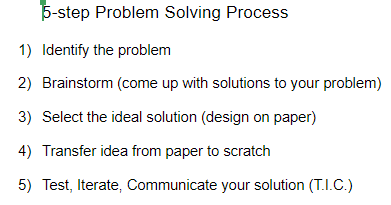
——————————————-
Grade 1 – Lesson 1
Grade 1 – Lesson 2
Grade 1 – Lesson 3
Grade 1 – Lesson 4 (no students)
Grade 1 – Lesson 5
—————————-
Grade 2 – Lesson 1
Grade 2 – Lesson 2
Grade 2 – Lesson 3
Grade 2 – Lesson 4
Grade 2 – Lesson 5
—————————
Grade 3 – Lesson 1
Grade 3 – Lesson 2
Grade 3 – Lesson 3
Grade 3 – Lesson 4
Grade 3 – Lesson 5
—————————
Grade 4 – Lesson 1
Grade 4 – Lesson 2
Grade 4 – Lesson 3
Grade 4 – Lesson 4
Grade 4 – Lesson 5
—————————
Grade 5 – Lesson 1
Grade 5 – Lesson 2
Grade 5 – Lesson 3
Grade 5 – Lesson 4
Grade 5 – Lesson 5
—————————
Grade 6 – Lesson 1
Grade 6 – Lesson 2
Grade 6 – Lesson 3
Grade 6 – Lesson 4
Grade 6 – Lesson 5
—————————
Grade 7 – Lesson 1
Grade 7 – Lesson 2
Grade 7 – Lesson 3
Grade 7 – Lesson 4
Grade 7 – Lesson 5
—————————
Grade 8 – Lesson 1
Grade 8 – Lesson 2
Grade 8 – Lesson 3
Grade 8 – Lesson 4
Grade 8 – Lesson 5
—————————
Grade 9 – Lesson 1
Grade 9 – Lesson 2
Grade 9 – Lesson 3
Grade 9 – Lesson 4
Grade 9 – Lesson 5 (no new lesson)
—————————
Grade 10 – Lesson 1
Grade 10 – Lesson 2
Grade 10 – Lesson 3
Grade 10 – Lesson 3
Grade 10 – Lesson 4
Grade 10 – Lesson 5


Humans have been using solar energy for thousands of years. Although the Ancient Greeks and Romans may not have had photovoltaic cells like the ones we use to convert sunlight to energy today, they knew how to use the sun to light their homes and help them grow crops!
As early as 400 B.C.E., Greek villages were built with architecture that maximized the amount of sunlight that poured in. Specifically, most houses were arranged so that sunlight could come in and warm things up during the winter months. The arrangement also blocked direct sunlight from entering homes during the summer, which kept the insides of the houses cool.
The sun was even more important to the Romans. In fact, one Roman legal code stated that you could not deny someone access to the sun! The Romans also invented window glass, which facilitated the building of the very first greenhouses.
As the Roman Empire expanded, fruits and vegetables were brought back to Rome and cultivated within these structures. Servants of the emperor Tiberius, who reigned during the 1st century C.E., even used a greenhouse-like system to ensure that their master could eat his favorite cucumbers every day of the year!
(Image 1.1)
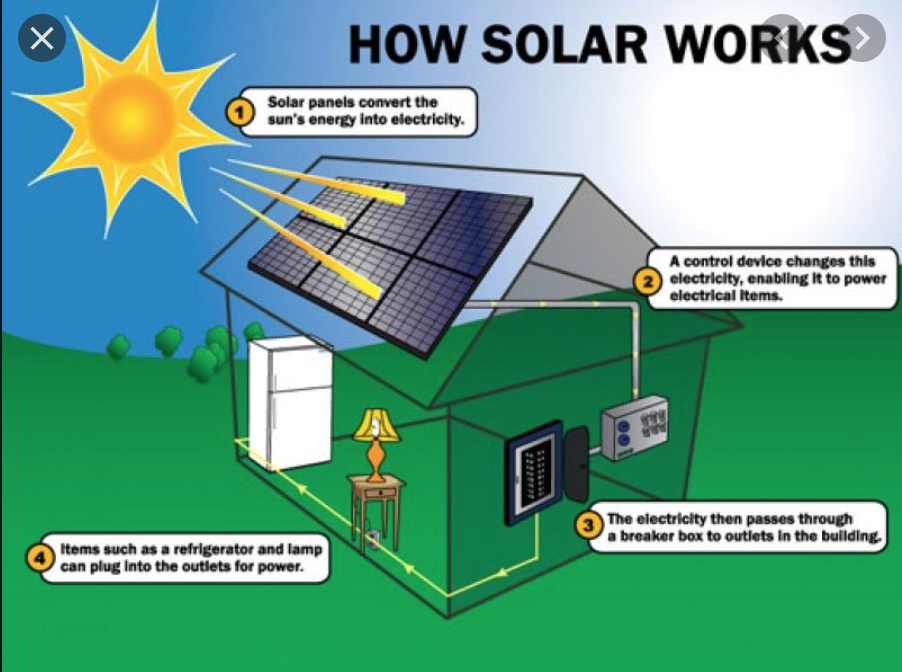
ELA: Attentive Listening, Critical Listening (2) Science: Solar Energy
Unit 2 Lesson 1- Solar Energy and How it Works
(Reading Exercise)
Fossil Fuel: A fossil fuel is a fuel formed by natural processes, such as anaerobic decomposition of buried dead organisms, containing organic molecules originating in ancient photosynthesis that release energy in combustion.
Solar Power- power obtained by harnessing the energy of the sun’s rays.
Renewable Energy Source- Energy source that comes from an ongoing process that will continue far into the foreseeable future
Photovoltaic/Solar Cells- Dark panels on solar powered devices or solar panels that convert sunlight directly to electricity
Semiconductor- a solid substance that has a conductivity between that of an insulator and that of most metals, either due to the addition of an impurity or because of temperature effects.
Photon- Light particle released by the sun
Electrons- Particles that create the flow of electricity
Climate- the weather conditions prevailing in an area in general or over a long period.
————————————-
Watch video on Solar Energy https://www.brainpop.com/science/energy/solarenergy/

Complete these sentences based on the video:
Answers
Fossil fuels are much cheaper.
The sun’s energy will not run out for billions of years.
A thermal collector
Electricity
light
Semiconductors
electrons
15 to 20 percent
Inefficient
10th Grade
Science Concept: Changes In The States of Matter

Matter can be changed from one form to another by heating or cooling. A change of state is therefore caused by a change in temperature and consequently a change in the kinetic energy of the particles.
Melting – When a solid is heated, the particles gain kinetic energy and begin to vibrate more vigorously. Eventually, the particles can overcome the strong forces of attraction between them and move more freely and further apart forming a liquid.
Evaporation – Evaporation is when a liquid changes to a vapor (gas), caused by an increase in temperature. When a liquid is heated, the particles gain kinetic energy and begin to move faster. Some of the particles near the surface of the liquid have enough energy to overcome the forces of attraction and can leave the liquid and become a vapor.
Boiling – Boiling differs from evaporation in that it takes place throughout the liquid. Once a liquid has started to boil, the temperature remains constant until all of the liquid particles have changed to a gas. All the energy is used by the particles to overcome the forces of attraction in the liquid to move further apart and become a gas.
Condensation – When the temperature of a gas is lowered, the particles lose kinetic energy and begin to move slowly. The forces of attraction now become more significant causing the particles to move closer together, forming a liquid.
Freezing – when the temperature of a liquid is lowered the particles lose kinetic energy and begin to move slowly. The forces of attraction between the particles become stronger causing the particles to move even closer together, forming a solid.
Sublimation – When the forces of attraction between the particles in a solid are weak, the addition of a small amount of heat can cause the solid to change directly into a gas without passing through the liquid phase. If the gas is then cooled it can change directly back into the solid. This is called sublimation.
———————————————————————
Concept Reinforcement Questions:
Relate how temperature can affect the change of states of matter
(Explain to your parent)
——————————————————————–
Supplementary Teaching Video Link:
——————————————————————————
Math Questions
Work on 1 module from your khanacademy.com account
Please have your child(ren) sign up for the STEMGuyana International Academy classroom on khanacademy.com. All children will be guided in their grade appropriate level for Maths. We will use this platform for weekly assessments.
https://www.khanacademy.org/join/48ZMNV2T
Class code
48ZMNV2T
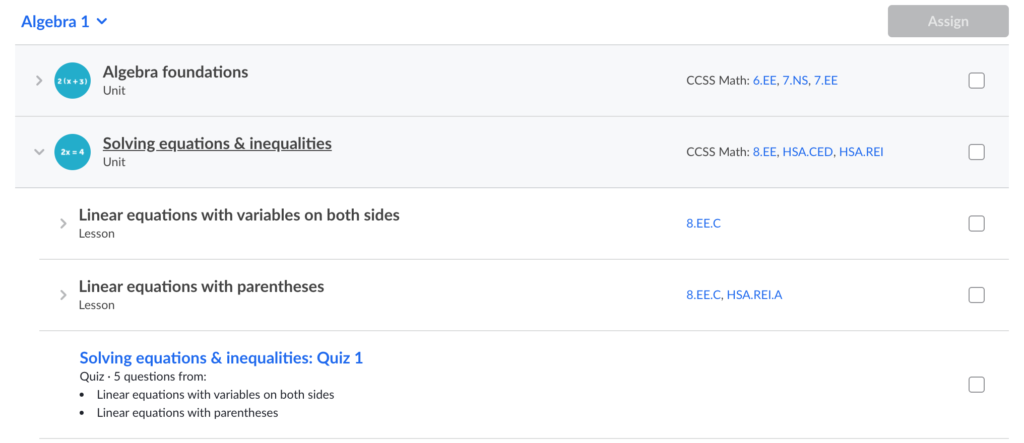
———————————————————————————-
Scratch Software
Create a Scratch animation project which differentiates correctly among the terms melting, evaporating, boiling, condensation, freezing and sublimation
9th Grade
Science Concept: Carnivore and herbivore dentitions
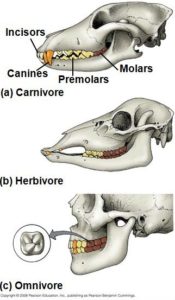
Supplementary Teaching Video Link:
Concept Reinforcement Questions:
– State reasons for the differences between herbivore and carnivore dentitions?
————————————————————————————————–
Math
Work on 1 module from your khanacademy.com account
Please have your child(ren) sign up for the STEMGuyana International Academy classroom on khanacademy.com. All children will be guided in their grade appropriate level for Maths. We will use this platform for weekly assessments.
https://www.khanacademy.org/
Class code
48ZMNV2T

————————————————————————————————–
Scratch Software
Create an animation showing the differences between carnivore and herbivore dentitions